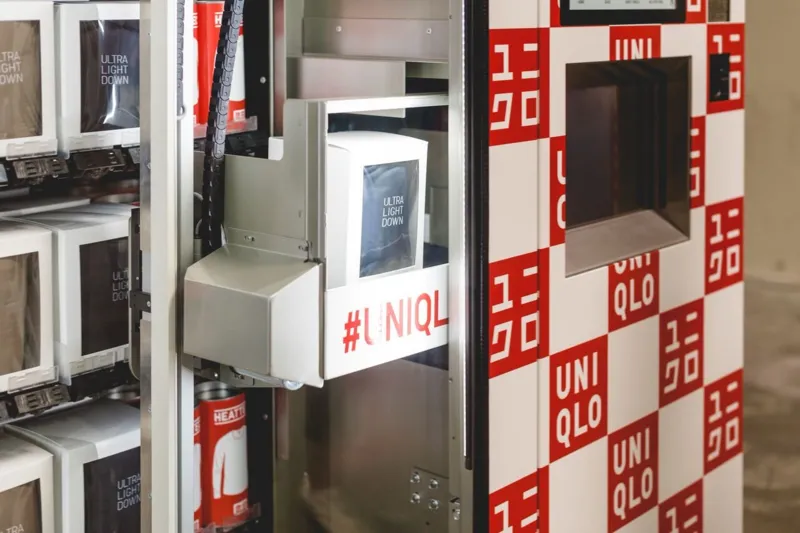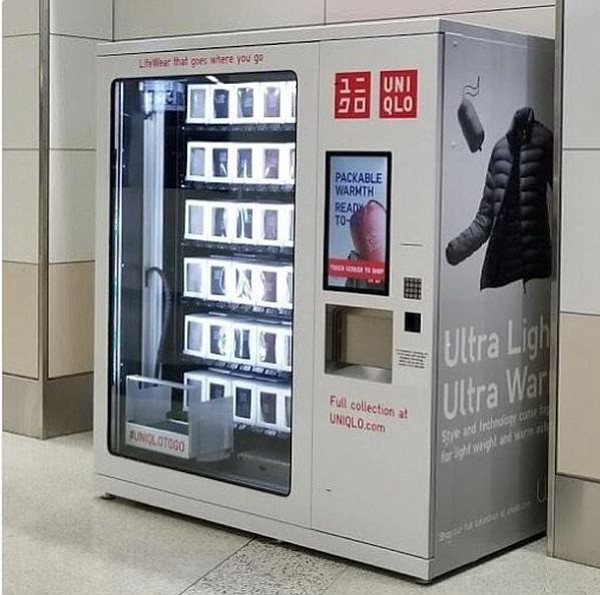Uniqlo has long stood out in the global fast-fashion industry. Founded in Japan in 1949, the brand has evolved into a powerhouse renowned for its simple, functional, and affordable clothing. With iconic products like HeatTech and Ultra-Light Down jackets, Uniqlo has redefined the concept of ‘basics’ by merging everyday wear with innovation. Yet, even as an industry leader, Uniqlo had to endure challenges in the retail landscape following the COVID-19 pandemic.
The pandemic accelerated the shift to digital-first shopping behaviours, while simultaneously highlighting the fragility of traditional mall traffic. Global consumers now expect seamless shopping experiences, faster delivery and personalization as a baseline. For a brand committed to accessibility and innovation, Uniqlo had to rethink how it could stay ahead in a world where convenience and technology shaped purchasing decisions.
To remain relevant, Uniqlo adopted a three-pronged reinvention strategy:
- experimenting with vending machines,
- leveraging artificial intelligence and
- executing a full-scale omnichannel transformation.
Together, these moves are not only reinventing Uniqlo’s position in retail but also setting the tone for the future of fashion shopping.
The Challenge
Uniqlo’s decision to reinvent its retail model stemmed from several pressing industry shifts, like –
- Declining Mall Foot Traffic: While it is true that mall traffic was on the decline, even before the pandemic, the onset of lockdowns reduced it further by a whopping 90%. COVID-19 accelerated e-commerce adoption, and physical stores faced reduced relevance. (Ref)
- Changing Consumer Expectations: In 2023, global online shopping fetched a revenue of $5.82 trillion, expected to touch $10.1 trillion by 2030. The deduction – travellers, commuters, and Gen Z shoppers increasingly valued speed, accessibility and seamless digital integration. Waiting in lines or navigating crowded stores no longer matched their lifestyles. (Ref)
- Competitive Pressures: Established rivals like H&M and Zara maintained strong store networks and e-commerce channels, while newcomers like Shein disrupted the space with ultra-fast, affordable and online-only business models.
- Personalization and Sustainability Demands: Modern shoppers expect brands to cater to their unique tastes while also proving their commitment to reducing waste and improving sustainability.
Uniqlo had to solve the puzzle of staying relevant and affordable while being innovative, sustainable and digital-first.
The Innovation Strategy
Vending Machines – “Uniqlo To Go”
One of Uniqlo’s most striking innovations came in the form of vending machines. Called Uniqlo To Go, the ‘first of its kind’ was launched in Oakland Airport, then in Houston Airport, followed by a global rollout in high traffic locations and transit hubs in Japan and other international locations. The idea was simple but powerful; deliver travel-ready essentials like Ultra-Light Down jackets and HeatTech T-shirts in places where people most often needed them on the go.
The vending machines offered:
- Touchscreen Interfaces that guided shoppers quickly.
- Robotic Arms for automated product selection.
- Cashless Payment Options, ensuring speed and hygiene.
- QR Codes, which extended access to the full Uniqlo catalogue online.
The benefits were significant. Beyond sales, these machines provided 24/7 brand visibility in locations where thousands of potential customers passed daily. Operational costs were lower than those of running physical stores, and the novelty factor attracted impulse buys, thereby strengthening Uniqlo’s reputation for accessible innovation.
Artificial Intelligence Integration
AI has been a central force in Uniqlo’s reinvention. The brand experimented with UMood kiosks, which use facial recognition and biometric data to recommend outfits based on brain mapping of customer reactions to images, helping them choose according to their mood. The interactive and gamified shopping experience had astounding outcomes with the generation of –
- 20 million PR impressions and 5,00,000 in earned media
- Over 2 million social impressions and 35,728 engagements
- 100 media articles published on the day of launch
- Online quiz taken 9,918 times
Beyond kiosks, Uniqlo deployed AI to optimize its supply chain. By analyzing purchasing data and trends, AI helped reduce overproduction and align inventory with actual demand. This not only reduced waste but also supported Uniqlo’s sustainability commitments.
For the consumers, AI-powered personalized product recommendations are available across Uniqlo’s digital platforms. Predictive analytics enabled the brand to anticipate what individual customers might need, thereby boosting satisfaction and conversion rates.

Source : UNIQLO
Omnichannel Transformation
Perhaps the most comprehensive element of Uniqlo’s strategy has been its omnichannel transformation. Recognizing that customers no longer distinguish between online and offline shopping, Uniqlo created a unified journey that involved
- Click & Collect: Customers could shop online and pick up items from in-store lockers without waiting in line.
- Express Delivery: In markets like Australia, Uniqlo introduced two-hour delivery windows supported by automated fulfilment centres.
- Unified Digital Platforms: Whether on the app, website, or in-store, customers experienced consistent branding, product availability, and seamless account integration.
This integration gave shoppers friction-free flexibility, transforming stores into service hubs rather than just sales floors.

Source : UNIQLO vending machine
Results
Uniqlo’s retail reinvention yielded tangible results that strengthened both customer engagement and operational performance:
- Vending Machines: These kiosks saw high engagement, especially in airports, where travellers purchased essentials on impulse. Beyond sales, the machines acted as brand billboards in high-visibility zones.
- Omnichannel Efficiency: Click & Collect and express delivery significantly reduced customer wait times while boosting e-commerce order volumes. This hybrid approach allowed Uniqlo to cater to both planners and last-minute shoppers.
- AI Personalization: Recommendation engines improved accuracy and relevance, leading to greater customer satisfaction and higher conversion rates. At the same time, AI-driven inventory management minimized waste and aligned production with actual demand.
- Brand Positioning: Uniqlo solidified its identity as a tech-forward, customer-first, and sustainability-conscious retailer, helping it stand apart from competitors.
Key Learnings
Uniqlo’s case study offers valuable insights for the wider retail industry and highlights
- Convenience Meets Experience: Vending machines proved that even utilitarian solutions can reinforce brand identity while offering convenience.
- AI Enables Everything from Scale to Sustainability: From kiosks to supply chain optimization, AI enables brands to personalize at scale while tackling the industry’s overproduction problem.
- Omnichannel Is the New Standard: A unified shopping journey is the new expectation. Retailers that fail to integrate digital and physical touchpoints risk losing relevance.
- Innovation Must Be Human-Centric: Technology works best when it enhances, rather than replaces, the customer experience. Uniqlo’s strategy exemplifies the power of blending automation with a people-first design, solidifying its relevance.
Innovation; Reinvention – What Lies Ahead With AI Omnichannel Integration
Uniqlo’s retail reinvention demonstrates that innovation in fashion doesn’t stop at clothing design. By embracing vending machines, AI, and omnichannel solutions, the brand has shown how retail can adapt to new consumer demands without losing its identity.
The vending machines illustrate how convenience can become an extension of brand storytelling. AI ensures that Uniqlo remains scalable, efficient, and sustainable, while omnichannel strategies bridge the gap between the physical and digital worlds.
As fashion retail continues to evolve, Uniqlo stands as a benchmark, proving the future of shopping is experiential, accessible and seamlessly integrated.

